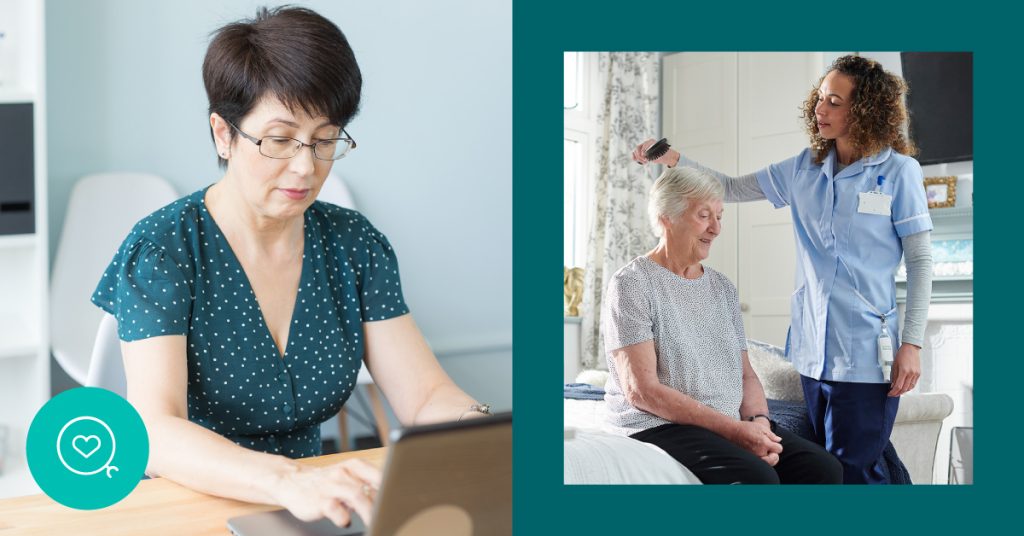Information is beginning to emerge from the CQC about their new single assessment framework across all sectors, service types and levels. This is currently being piloted with selected providers including home care agencies. The pilot process will allow for tweaks to the framework and process with the aim of launching in January 2023.
The new framework will provide a more structured and consistent approach to inspection that is built around the existing key questions. It is much more focussed on people, practice and (for providers outside of home care) observation.
Information will be used from a range of sources to assess providers more frequently but also in a more flexible way that could perhaps result in more frequent inspections in an area of high risk or more detailed evidence gathering or engagement where appropriate.
Time on site will be spent gathering evidence, for example, observing care, equipment and premises as well as speaking to service users, advocates and staff. Other evidence will be gathered off-site, including through software such as CareLineLive.
New providers will register with the CQC’s online provider portal and once approved they will start with a rating of ‘Good’ with the optimum process from there of continuing assessments of quality. Where complaints are raised these will trigger a quicker inspection.
The new single assessment framework provides a method for providers to continually update their services making changes that will improve their ratings more quickly than the previous method where they would have had to wait until the next inspection.
The new CQC framework explained
The 5 key questions (are we safe, effective, caring, responsive and well-led) remain central to the regulatory approach.
However, a new series of quality statements, pitched at the level of ‘Good’ is being introduced that will replace the current key lines of inquiry (KLOEs). ‘I’ and ‘We’ statements will be used as reference points that reflect the views of real people. These will enable the CQC to make judgements about the quality of care using understandable standards and expectations that are focused on people.
“When I move between services, settings or areas, there is a plan for what happens next and who will do what, and all the practical arrangements are in place.”
Example of an ‘I’ statement
It is clear from this statement alone that emphasis is being placed on collaboration between partners whether local authority, health, housing or private providers.
An example of collaborative working:
A care provider working closely with a hospital discharge team and local authority to ensure that a service user is receiving appropriate care and support when discharged from hospital. Additionally, evidencing that processes are in place to ensure that key stakeholders have access to is CareLineLive’s Care Circle.
The ‘We’ statements are designed help to make expectations clearer for providers.
Both these example statements come from the new framework covering safe system pathways and transitions.
“We work in partnership with others to establish and maintain safe systems of care in which people’s safety is managed, monitored and assured, especially when they move between different services.”
Example of a ‘We’ statement
An example of safe pathways and transitions using technology is as follows:
CareLineLive’s suite of assessments allows care providers to add key stakeholder information which can be updated when required through the management portal. When a service user moves between services this easily accessible information is available to add to the handover documentation which facilitates a smooth transition for the service user.
The new CQC evidence categories – what information will be gathered
There will be six new categories covering the evidence that needs to be collected during the quality assessment process:
- People’s experiences
- Feedback from staff and leaders
- Observations of care
- Feedback from partners
- Processes
- Outcomes of care
The evidence that will be required to support these categories and help the CQC make decisions is not dissimilar to that already used. The data and evidence is already familiar to providers but the new framework will provide more order and process around evidencing. The evidence categories will set out what will be required in order for the CQC to make informed decisions and there will be ongoing assessments of quality.

What a year of assessment could look like for a home care provider
Assessments will not be tied to set dates or driven by previous ratings. They will also incorporate a check that ratings reflect the experience of people actually using the service.
Information (evidence) will be collected on an ongoing basis and ratings can be updated at any time to enable the CQC to respond more flexibly to changes in risk.
At a minimum in a typical year this will mean collecting evidence from:
- Peoples experiences
- Feedback from staff and leaders – likely bi-annually
- Feedback from partners
- Processes
Data and insights will be used to decide which services to visit.
The process could look like this:
- A CQC relationship management call is made with the provider and from this a request will be made for evidence
- The home care provider submits the required evidence via the CQC provider portal
- The evidence is then assessed against the evidence categories for the 5 quality statements. This will inform a continuation or change in rating
- The rating is published
After the rating is awarded, if the CQC receives information, perhaps a complaint from a member of staff about a serious concern, a CQC interview with the registered manager may be triggered to understand more. The cycle now begins again with a process of further information gathering including submission of documentation via the portal as well as conversations with staff, managers and service users. Finally, a (possibly revised) rating is published and a follow-up call with the registered manager is made.
How will the new CQC assessment scoring work?
There will be greater transparency in scoring so that providers can see which areas of a key question they are doing well in and where they need to improve.
Scores are given to each quality statement out of four and then a total score is converted to a percentage.
- 25-28% is considered inadequate
- 39-62% requires improvement
- 63-87% is good
- More than 87% is considered outstanding
New CQC assessment timetable
The new approach is already being rolled out with providers they are calling the ‘early adopters’.
From September 2022 this initial group will be expanded to a small number of GP practices, independent providers and care homes.
From October the new provider portal will be opened to all providers and assessments using the new approach will begin with an early adopter group.
From January 2023 the aim is to start the full roll-out of the new assessment framework. At that point all providers will be regulated this way and will be using the new provider portal.
How is CareLineLive responding?
CareLineLive is committed to enhancing it’s award-winning all-in-one home care management platform to support home care providers in keeping pace with the emerging CQC single assessment framework.
Where to find more information
The CQC website is the first place to look. We have pulled much of the information in this article from various pages and a webinar that they produced.



